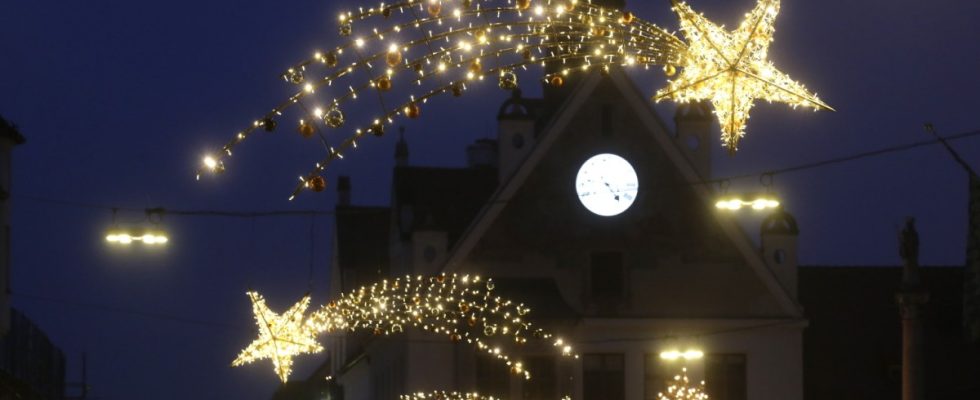No matter whether in the nativity scene, as the top of the Christmas tree or as a normal decoration: the star has become an integral part of the Christmas season. But was it actually a star that announced the birth of Jesus and showed the wise men from the East the way to Bethlehem, as told in the Gospel of Matthew? And if not, then what was it?
Theologians and astronomers have been grappling with this question for centuries. No one can say with absolute certainty when Jesus was really born and what the Star of Bethlehem actually was – and many theologians now view the Star of Bethlehem as a legend that has a theological function but cannot be historically proven.
But sometimes the fictional and the real are so closely linked that they can no longer be separated, and so the star, like many things in religion, remains a question of faith. But one thing is certain, says Hallbergmoos astrophysicist Thomas Boller, who works at the Max Planck Institute for Extraterrestrial Physics in Garching: It wasn’t a comet. And neither is a supernova.
Mr. Boller, the birth of Jesus is traditionally depicted with a comet. Is that understandable?
The idea of a comet as a sign of the birth of Jesus dates back to the Middle Ages, particularly to the Italian painter Giotto di Bondone. Giotto created a birth scene with a comet in the Scrovegni Chapel in Padua, which has since been widely copied. He painted the scene between 1304 and 1306. Shortly before that, in 1301, Halley’s Comet could be seen very brightly. Giotto was probably inspired by this.
The problem, however, is that Halley’s Comet appears every 76 years: it was seen in 12 BC, and not in the period between 9 and 4 BC – that is, between the census and the death of Herod – where the supposed birth of Jesus should have taken place. No other comets have been documented for this period. And even if it had, they probably wouldn’t have been interpreted as a sign of the birth of Christ.
Why?
Because comets have always been considered bringers of bad luck. As a sign of death, plague, war. The fact that they are interpreted as something positive is something new.
The Hallbergmoos astrophysicist Thomas Boller works at the Max Planck Institute for Extraterrestrial Physics in Garching.
(Photo: Marco Einfeldt)
Another theory says that the Christmas Star was actually a supernova – an exploding star.
This is Johannes Kepler’s theory. He observed a supernova explosion in 1604 and suspected that the Star of Bethlehem could also have been a “new star”. Another argument against supernovas and comets is that both would have been clearly visible over days. Such an event would not only have been noticed by the three star-savvy scholars, i.e. the three wise men of tradition, but by everyone. But there is no written mention of this.
What do you think is the most likely theory?
One event that certainly occurred is the conjunction between the planets Jupiter and Saturn in the constellation Pisces.
How can you calculate what the sky over Palestine looked like 2000 years ago?
Using a digital planetarium, one can depict the appearance of the sky from any location at any time in the past or future. I looked at heaven from before 9 BC to 4 BC. During this period, the joint rising of Jupiter and Saturn in conjunction took place several times in the year 7 BC. With the human eye, this conjunction can be seen as a single star.
When did these conjunctions take place in 7 BC?
The first common ascent took place on March 15, visible between 4:30 and 5 a.m. Jerusalem time. This was the sign that the star experts from Damascus had been waiting for: Jesus was born. In September of the same year, Jupiter and Saturn rose together in the evening. For those who knew the stars, this was confirmation of the birth of Jesus, so they set off from Damascus to Jerusalem. Once there, they looked for the new king. On November 13th, between 7 and 8 p.m., Jupiter and Saturn stood “still” toward Bethlehem as seen from Jerusalem. This optical effect occurs when the planets make a retrograde motion in front of the rotating starry sky. So the scholars went to Bethlehem and found an eight-month-old child. This also fits symbolically.
What do you mean?
Jupiter has always been considered the royal star, but Saturn represented the people of Israel. The constellation Pisces was a symbol of Palestine and the conjunction symbolized the transmission of royal salvation. For the celestial experts, this extraordinary cosmic situation had to be confirmation of their predictions.
If Jesus was not born on December 25th, as many claim, where did this date come from?
December 25th was celebrated in the Roman Empire as the day of the birth of the sun god (Sol Invictus). As Christianity spread, some Christian celebrations overlapped with existing pagan festivals. In the 4th century, Pope Julius I probably established December 25th as the official holiday for the birth of Christ. This choice could also be due to the fact that it coincided with already established celebrations.
But do you celebrate it traditionally?
Yes! Christmas Eve remains December 24th. For me it is the day of anticipation and anticipation of Christmas.

